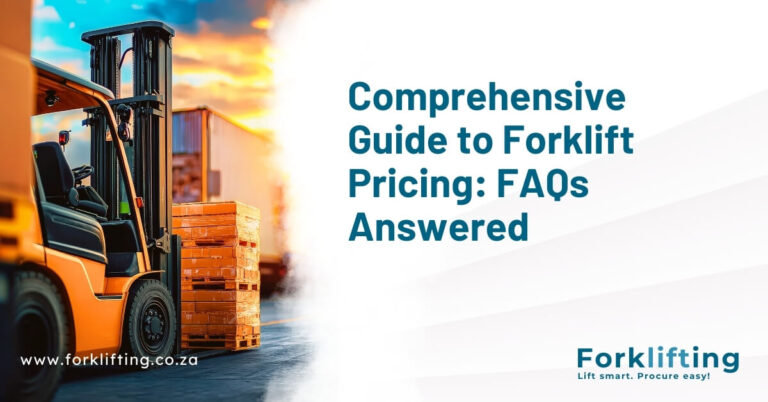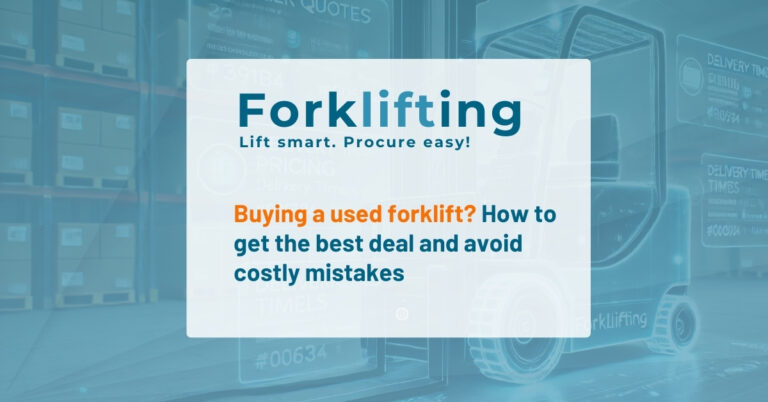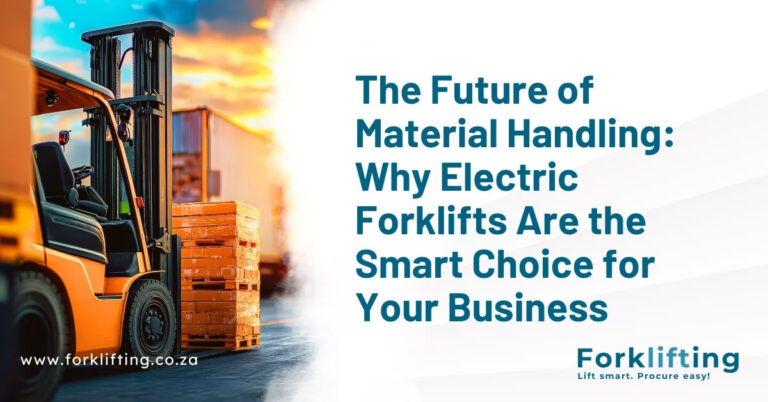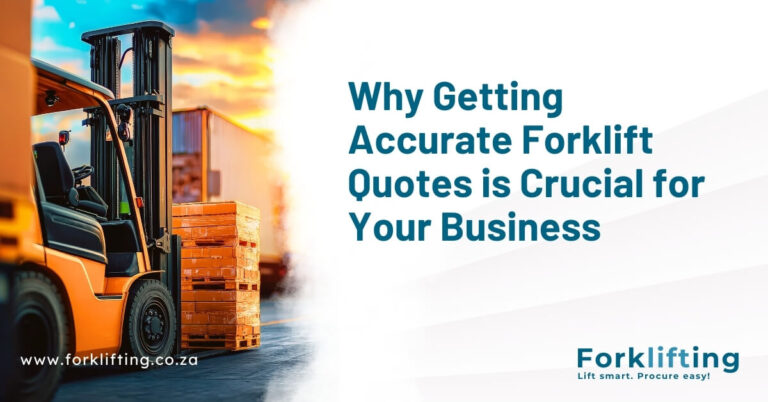In the world of logistics and warehousing, forklifts are indispensable tools. For procurement officers, operational managers, and business owners, selecting the right type of forklift can significantly impact productivity, cost-efficiency, and environmental sustainability. At Forklifting, we explore the differences between diesel and electric forklifts, discuss the transition from diesel to electric, and provide guidance on making the best choice for your operational needs. If you’re looking for competitive forklift quotes, we also offer a streamlined process to connect you with top suppliers.

Diesel vs Electric Forklifts – Key Differences and Benefits
Diesel Forklifts
Diesel forklifts are powered by internal combustion engines that run on diesel fuel. They are known for their power and durability, making them suitable for heavy-duty applications. Key advantages include:
- Higher Power and Torque – Diesel forklifts can handle heavier loads, making them ideal for industrial settings.
- Extended Operational Range – They can run for extended periods without the need for frequent refueling.
- Ruggedness – Designed for outdoor use, diesel forklifts can navigate rough terrains and challenging environments.
- Durability – Built to withstand harsh conditions and rough usage.
However, diesel forklifts have downsides, such as higher emissions, noise pollution, and increased maintenance costs. These factors are critical in environments with stringent environmental regulations or where noise is a concern.
Electric Forklifts
Electric forklifts, powered by rechargeable lead-acid and lithium-ion batteries, are becoming increasingly popular, especially in urban and indoor settings. Their benefits include:
- Lower Operating Costs – Electric models typically have lower fuel and maintenance costs compared to diesel counterparts.
- Environmentally Friendly – They produce zero emissions, making them suitable for indoor use and helping to meet sustainability goals.
- Quieter Operation – Electric forklifts operate quietly, reducing noise pollution in work environments.
- Reduced Maintenance – Fewer moving parts mean less wear and tear over time.
Despite these benefits, electric forklifts have limitations, such as the need for battery charging infrastructure and potential downtime during recharging.
Comparison Table: Diesel vs. Electric Forklifts
| Feature | Diesel Forklift | Electric Forklift |
| Power & Torque | High | Moderate |
| Operating Cost | Higher (fuel & maintenance) | Lower (battery & minimal maintenance) |
| Environmental Impact | Produces emissions | Zero emissions |
| Noise Level | Loud | Quiet |
| Best Use Case | Outdoor, heavy-duty tasks | Indoor, sustainability-focused operations |

Transitioning from Diesel to Electric Forklifts
When to Consider Transitioning
Transitioning from diesel to electric forklifts can be a strategic decision. Consider the following factors:
- Operational Environment: Evaluate your operational environment. If you primarily operate indoors or in areas with strict emission regulations, electric forklifts may be the better choice.
- Sustainability Goals: Aligning your equipment with your company’s sustainability goals can enhance your brand image and meet regulatory requirements.
- Cost-Benefit Analysis: Conduct a thorough cost-benefit analysis to compare the long-term savings from electric forklifts against the upfront investment in new equipment and infrastructure.
- Technological Advancements: Stay informed about advancements in battery technology, which can impact the feasibility and efficiency of electric forklifts.
- Workload and Usage Patterns: Assess your workload and usage patterns to ensure that electric forklifts can meet your operational demands without excessive downtime.
Steps for Transitioning
- Assess Current Fleet: Evaluate the performance, age, and maintenance costs of your current diesel forklifts.
- Conduct a Needs Assessment: Determine your operational requirements, including load capacities, lift heights, and usage frequency.
- Pilot Program: Consider a pilot program with electric forklifts to gauge performance and adaptability in your operations.
- Evaluate Infrastructure Requirements – Ensure you have the necessary charging stations and power supply to support an electric fleet.

Diesel vs Electric Forklifts – How to choose the right fit
Short-Term vs. Long-Term Needs
- Short-Term Needs: If immediate lifting capacity and heavy-duty performance are required, diesel forklifts may be the right choice. They are also suitable for companies that have not yet invested in electric charging infrastructure.
- Long-Term Needs: For sustainability-focused businesses or those operating in urban settings, electric forklifts may become increasingly attractive. Their lower operating costs and environmental benefits can lead to significant savings over time.
Key Considerations
- Load Capacity: Ensure the forklift can handle the maximum weights you intend to lift.
- Operating Environment: Consider whether you will be using the forklift indoors, outdoors, or in mixed environments.
- Charging Infrastructure: Evaluate the feasibility and cost of installing electric charging stations if transitioning to electric forklifts.
More to Read: Should you buy or rent a diesel or electric forklift?
More to Read: The Essential Forklift Procurement Checklist will help you with a well-structured procurement checklist and needs analysis to help you streamline your process, reduce risks, and optimise costs when it comes to purchasing or hiring your diesel or electric forklift.
Get Instant Forklift Quotes from Top Suppliers
At Forklifting, we make forklift procurement easy by connecting buyers with verified suppliers. Whether you’re looking for diesel forklifts, electric forklifts, or rental options, we provide multiple quotes so you can compare and make informed decisions.
🚀 Click here to request forklift hire quotes or forklift sales quotes – Get multiple competitive offers within 24 hours!
Conclusion
Deciding between diesel and electric forklifts involves careful consideration of your operational needs, environmental goals, and financial implications. Each option has its strengths, and the right choice will depend on your specific circumstances. By assessing your current fleet, understanding future requirements, and considering a gradual transition, you can ensure that your forklift investment aligns with both your short-term and long-term operational objectives.
Invest in the right forklift today, and watch your operational efficiency soar!




